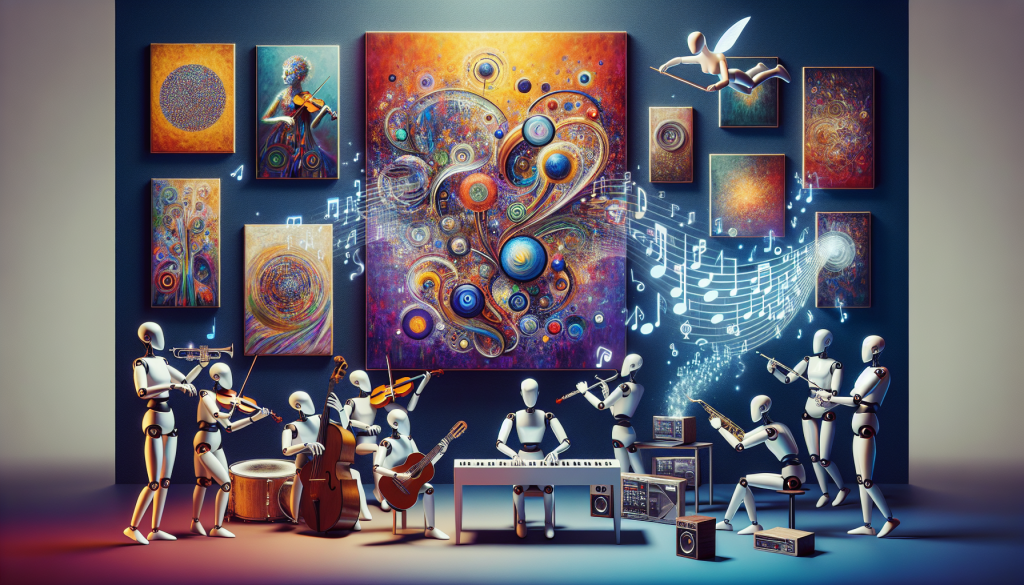
In the evolving landscape of business, generative AI has emerged as a catalytic force, sparking waves of innovation across various industries. With each year, the examples of AI’s generative capabilities grow more extraordinary, offering a glimpse into a future where creation and automation coalesce seamlessly. As we venture into 2024, generative AI stands at the frontier of transformation from content creation to complex problem-solving, demonstrating its potential in reshaping how businesses operate and engage with their consumers.
Generative AI refers to the branch of artificial intelligence that leverages algorithms to create new content or data that is similar to but not identical to what it has been trained on. It’s a technology that can write text, compose music, produce images, model in 3D, and even generate code. The power of generative AI lies in its ability to learn from vast amounts of data and then use that learning to generate new, unique outputs.
One of the most engaging utilizations of generative AI is in the sphere of business naming. AI-powered business name generators harness the creative capabilities of AI to propose inventive and resonant names for emerging businesses. Entrepreneurs seeking unique names that capture their brand’s essence can now leverage the efficiency of AI to generate a plethora of viable options, saving time and resources in the quest for the perfect business identity.
In realms like Google’s Bard, ChatGPT, or OpenAI’s DALL-E, generative AI delivers incredible examples of such innovation. Google Bard, for one, explores the complex mosaic of human language, learning and producing texts that resonate with human readers. It is an orchestration of machine intelligence translating human thought into articulate and coherent narratives, which has widespread application in content generation.
Similarly, ChatGPT, developed by OpenAI, has showcased its prowess in generating human-like text, offering applications in customer service, content creation, and even in educational domains. By producing text that parallels human conversation, ChatGPT is revolutionizing real-time customer interaction, acting as a bridge between businesses and consumers.
DALL-E, another brainchild of OpenAI, represents the visual side of generative AI by creating images from textual descriptions. The AI demonstrates an astonishing ability to comprehend and visualize concepts, offering industries such as advertising, design, and marketing an innovative tool to visualize ideas at an unprecedented speed.
Taking a leap into video creation and editing, generative AI introduces an era where the production of visual media is transformed. By generating realistic sequences and animations, AI facilitates the rapid creation of video content, thus serving the film and advertising sectors where time and budget are critical factors.
The world of music has not been left untouched by generative AI. The technology is now able to compose original scores, tailor-made to any style or mood. It can assist composers by providing a foundation to build upon or operate autonomously to create entire compositions, illuminating the collaborative potential between human ingenuity and artificial intelligence.
Moreover, in the sphere of 3D modeling and gaming, generative AI is pushing the boundaries of virtual reality and simulation. AI algorithms can generate complex 3D environments and characters, offering game developers and architects the tools to visualize and construct scenarios with improved speed and precision.
Generative AI’s capabilities also extend to code generation, where it aids in automating software development processes. Services like GitHub Copilot suggest lines or blocks of code to developers in real-time, boosting productivity by allowing more focus on problem-solving rather than syntax.
In the field of sentiment analysis, generative AI navigates through a jungle of data to detect and interpret subjective information, providing businesses with valuable insights into consumer perceptions and trends.
As we forge ahead, the proliferation of generative AI applications continues to accelerate. Each example, whether it’s crafting business names or developing complex models, underscores the transformative potential of AI that can think, learn, and create. While there is much discussion about the ethical and practical implications of AI, it is undeniable that generative AI is forging a new frontier for innovation in 2024, transforming the way we work and shaping our collective future.